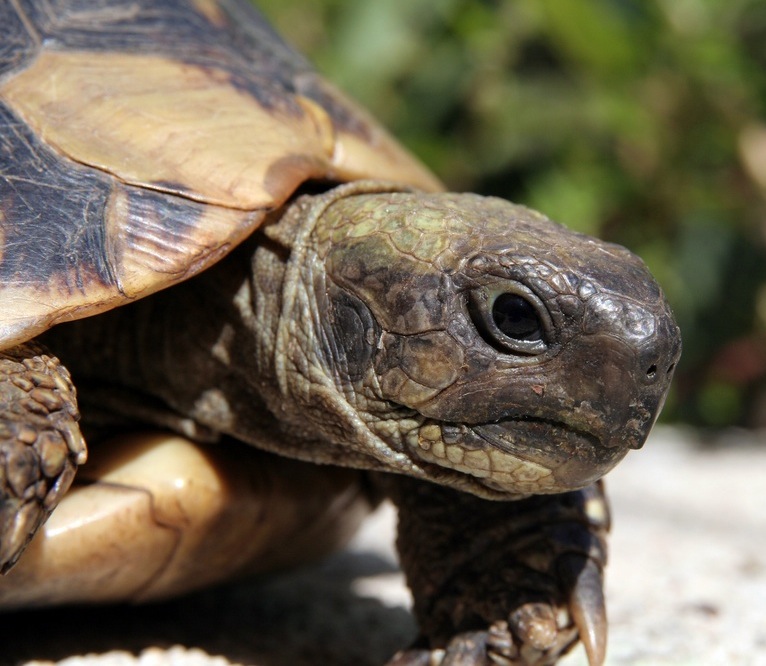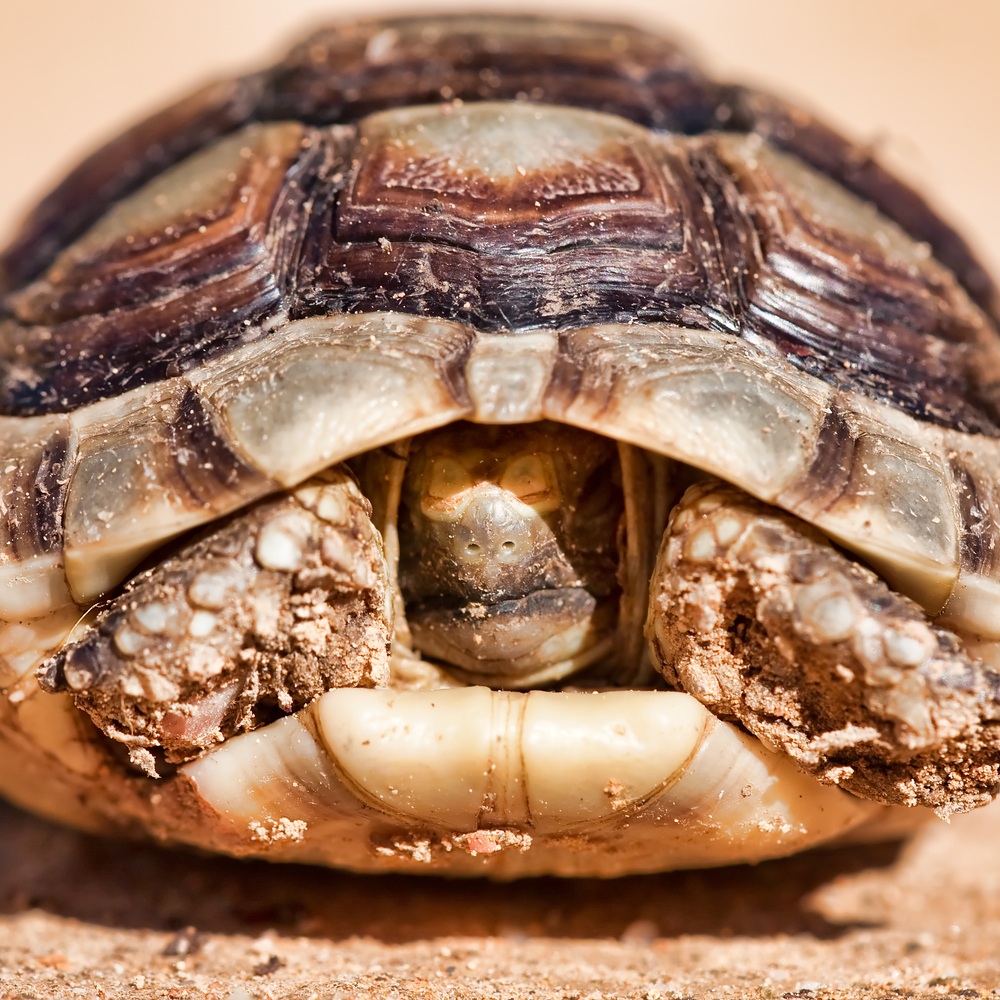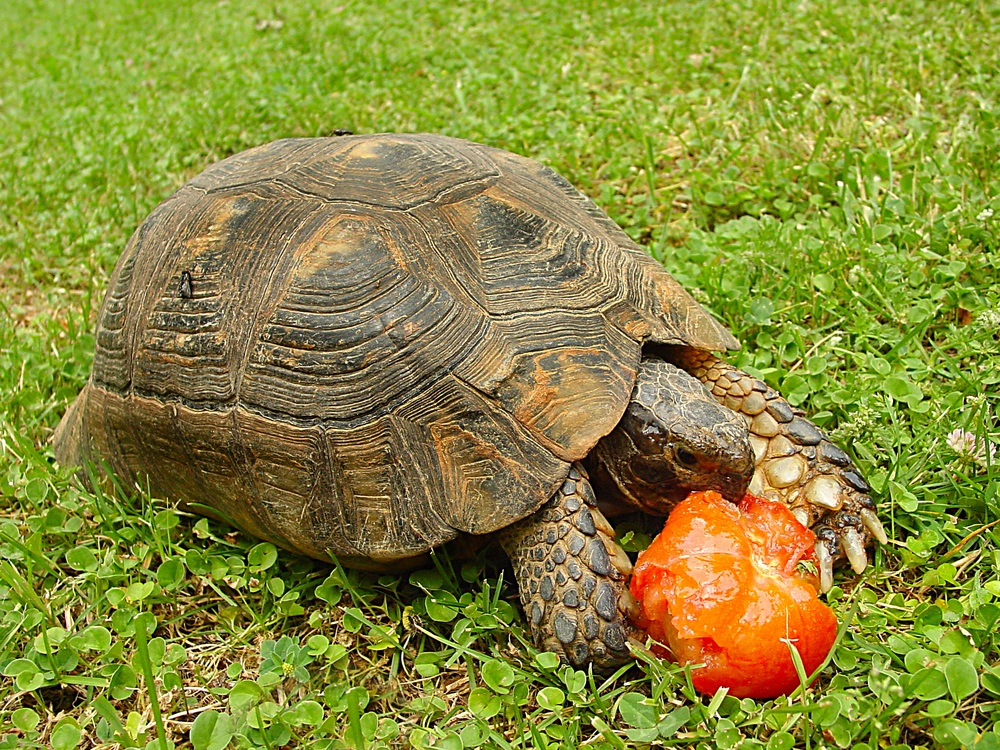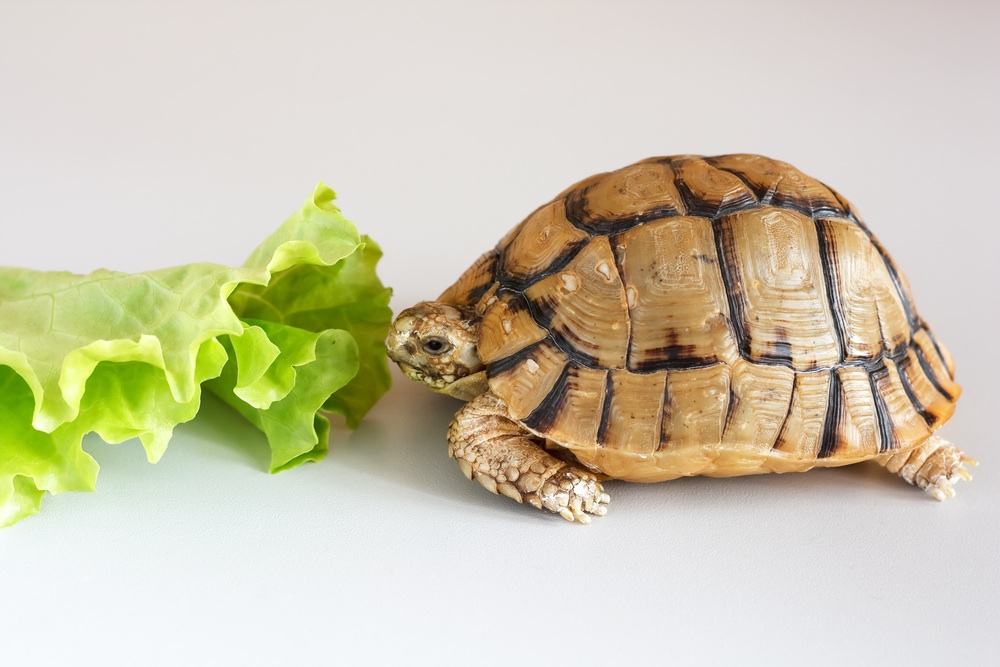Awaking from the deep sleep

After one of the coldest winters for a century, tortoise owners have not been faced with the problem of their pets stirring too soon out of hibernation, as has been the case over recent years. But a prolonged slumber can create problems too, and it is vital to get your pet eating again as soon as possible after it emerges from hibernation.
Rekindling your tortoise's appetite after hibernation is vital to its health, both in the short and long term. Otherwise, this may mark the start of a downward spiral that can ultimately lead to its demise within a year or so. Weight gain in tortoises to make up for that lost over the winter period takes place during the early months after emerging from hibernation.
This therefore makes it critical to persuade your pet to start eating again without delay. Otherwise, you will find that having failed to put on sufficient weight this year, so your tortoise will be in worse condition when it comes to hibernating again in the autumn. The only safe thing to do then may be to keep it awake over the winter.
It is well-worth investing in a tortoise table, even if you intend for your tortoise to spend much of its time out in your garden over the warmer months ahead. Using a tortoise table now means that you will be able to keep your pet at its optimum temperature, around 24°C (75°F), warming it up over the course of several days.
This will then encourage the tortoise to eat, and will allow you to continue feeding it indoors until the weather is warm enough to put it outside in the garden again. It provides a means of ensuring your tortoise can continue feeding normally even if the spring proves to be as bad as the winter. A ultraviolet (UV) source over the tortoise table is important too, as this will act as a further appetite stimulus, thanks to the UVA component of this type of light.
What to do

The first thing that most tortoises require on emerging from hibernation will be a drink of water. Over the period of their dormancy, they are likely to have become dehydrated to a degree, and this will suppress their appetite. Tortoises which are in this state spend longer with their eyes closed, and are less inclined to wander around their quarters.
You can often overcome this quite easily simply by means of a warm bath. Depending on the size of your tortoise, you may need to buy a cheap washing-up bowl which will serve for this purpose. This also has the advantage of being relatively stable, and won't be tipped over easily. Even so, as a precaution, place it in an area where if water is spilt, it can be mopped up and the floor disinfected afterwards.
Avoid positioning the bath in a draught though, or leave your tortoise exposed to being harmed by dogs or cats. Fill it partially up to the level of the reptile's lower jaw, with water about 21°C (70°F), but do not make it any deeper at this stage, while the tortoise is still drowsy.
Gently place your tortoise in the water and watch its reaction. When it has just woken up, it is likely to dip its head down into the water, and will start to drink freely. This is a good sign.
Leave your tortoise here for perhaps five minutes at a time. You will soon notice when your pet loses interest in drinking, as it will then start to try to get out of its bath. It is a good idea to keep up with daily baths for perhaps a week or so, and certainly until the tortoise is eating readily again, to ensure that it is adequately rehydrated. After this, it will drink occasionally from a water container as usual.
Offering food

Following its period of slumber, your tortoise is likely not to be especially focussed on food at first - literally! When providing food, place this a short distance in front of the tortoise, rather than immediately in front of its face. It is then more likely to move forward slightly and extend its neck to start eating. Do not be surprised if the reptile appears to be slightly uncoordinated at this stage, and may miss with its initial attempts to bite at its food. This is quite normal.
One of the best foods to offer at this stage is fresh tomato, sliced into quarters. Lace the fruit with a powdered supplement such as Vetark's Nutrobal, to boost the tortoise's vitamin and mineral levels. Tortoises seem to relate readily to the red colour of tomatoes, and also appreciate their juicy nature, which helps them to rehydrate.
Fresh food

In spite of the harsh winter weather, it is now possible to see signs of plant growth outdoors, and it should be possible to track down dandelions for your pet now as well. If you dig up some of these roots, and bury them vertically in plant pots filled with soil, keeping them moist, you should soon find that they start sprouting, growing quicker inside in a relatively warm and well-lit surroundings than outdoors. Rich in calcium, these will also help to lower your feeding costs at this stage.
Weighing up
One of the best guides to checking on your tortoise's state of health, and not just following hiberation, will be to weigh your pet regularly, keeping a note of the findings. You can then see how its condition is progressing. Buy some scales specifically for this purpose, and a small pocket diary where you can record the results. This will also ultimately help you to determine whether your tortoise will be fit to hibernate again in the autumn this year.
In most cases, with regular, daily baths and being kept in a warm, well-lit environment, a healthy tortoise should be eating again within a week to 10 days of emerging from hibernation. If you do not see any improvement over this period however, with the reptile appearing dull and inactive, then seek veterinary advice.

It is not uncommon for tortoises emerging from hibernation to be afflicted by so-called 'mouth rot' and this will deter your pet from eating. This is basically a bacterial infection, which gives rise to a cheesy, yellowish deposits building up within the mouth. Even if it is difficult to look into your tortoise's mouth, you are likely to notice a bad odour here.
Rapid treatment can soon lead to a full recovery, with your vet usually having to removing the accumulated material from the mouth, and treat the infection. This frequently requires the tortoise to be sedated, as these reptiles are usually very reluctant to co-operate by opening their mouths. There may be other causes of its dullness and inappetance however, and blood tests can now be carried out to help to isolate the source of a problem of this type.
Seeking veterinary advice
Specialist vet Mark Rowland, BVSc, CertZooMed, MRCVS of the Trinity Veterinary Centre in Maidstone, Kent, has come up with a checklist of signs which require immediate veterinary attention, in tortoises that have just woken up from hibernation. They are:-
Any eye problems - such as cloudiness or signs of possible blindness.
Any signs of frostbite and gangrene affecting the legs
Swellings on the head and body.
General signs of inactivity, plus failure to eat or thrive in warm surroundings.
Green-coloured urine.
“It is important to remember that a tortoise may have been sick for many weeks in hibernation and so may be desperately ill by this time of year,” Mark emphasises. “If you are in doubt, seek advice without delay, ideally from a vet who treats tortoises regularly although all veterinary surgeries can offer assistance if required.”